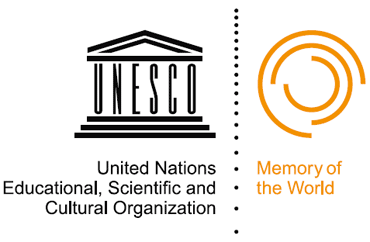
In this Cloister, the Cortes of León were celebrated in 1188, at the beginning of the reign of Alfonso IX. His Decreta (decrees) have been recognized by the UNESCO as ‘the oldest documentary manifestation of the European parliamentary system’ granting León the inscription of ‘Memory of the World’ since it is considered the ‘Cradle of Parliamentarism’.
The southern cloister is a very beautiful sight although the only medieval remnant is one of the galleries, in particular the one which gives way to the Basilica and was the result of joining the pórtico to the early church. The rest consists of two floors, the first of Plateresque style dating from 16th century, when a new cloister was commissioned by the abbot Fonseca (1519-1524). The second floor is a Neoclassical reconstruction of the first third of 18th century and it was built by Compostizo and Domingo the Portuguese, with a remarkable decorated frieze displaying allusions to the Queens of Spain.
Concerning style, the series of Romanesque arches comprise an open five-arch gallery which ran along the north wall of the early church as far as the wall and which remained concealed from the 16th to the first quarter of the 20th century, when, during the construction of the new cloister, they were discovered by the architect Torbado.
The arches that can be seen today were restored in 1960 by Menéndez Pidal. Some pieces are rebuilt and some others are original. The portico is topped by a cornice and modillions with wolf heads, analogous to those of the church of San Pedro de Teverga. The walls were built with recycled materials and, among them, tiles with the stamp of the Roman Legio VII Gemina (which founded the city of León) have been found.
The cloister is still used by Leonese people for holding traditional celebrations such as Las Cabezadas (‘Bows’; the last Sunday in April), the Palm Sunday procession and the rite of the Easter Vigil.
The cloister opens onto several chapels; in the chapel of los Vaca, open to the public, two interesting elements of the Collegiate Church can be found. The ‘cock weathercock’ of the so called Torre del Gallo (‘Cock Tower’), made of leaded copper and covered in gold.
Researches carried out by an interdisciplinary committee of experts have proved that the pollen found came from the Persian Gulf, since it was a basin that would have come to León through Al-Andalus, probably as a gift or tribute, and that dates back to the ending of 6th century.
A Mozarabic bell can be also admired; it is considered as the oldest in Spain, because it was cast in 1086, and some scholars claim that it could have been used by the Cid.
The Tower was built throughout three stages: the two first stretches belong to the 11th century: it is the part that is close to the wall, devised as defensive enclosure. The following two date from the 12th century and are use as bell tower. The roof is from the 18th century.
CLOISTER



In this Cloister, the Cortes of León were celebrated in 1188, at the beginning of the reign of Alfonso IX. His Decreta (Decrees) have been recognized by the UNESCO as ‘the oldest documentary manifestation of the European parliamentary system’ granting León the inscription of ‘Memory of the World’ since it is considered the ‘Cradle of Parliamentarism’.
After this initiative of Alfonso IX of León, several European kingdoms held Cortes with the participation of representatives from the cities. It was the case of the Kingdom of England, which until now had considered its Magna Carta as the foundation stone of Western parliamentary democracy. Thus, it was in this place where a path to the participation of the Third Estate in governmental decision-making was opened up.





